Dee Clements: Late Bloomer
May 22nd - August 7th, 2025-
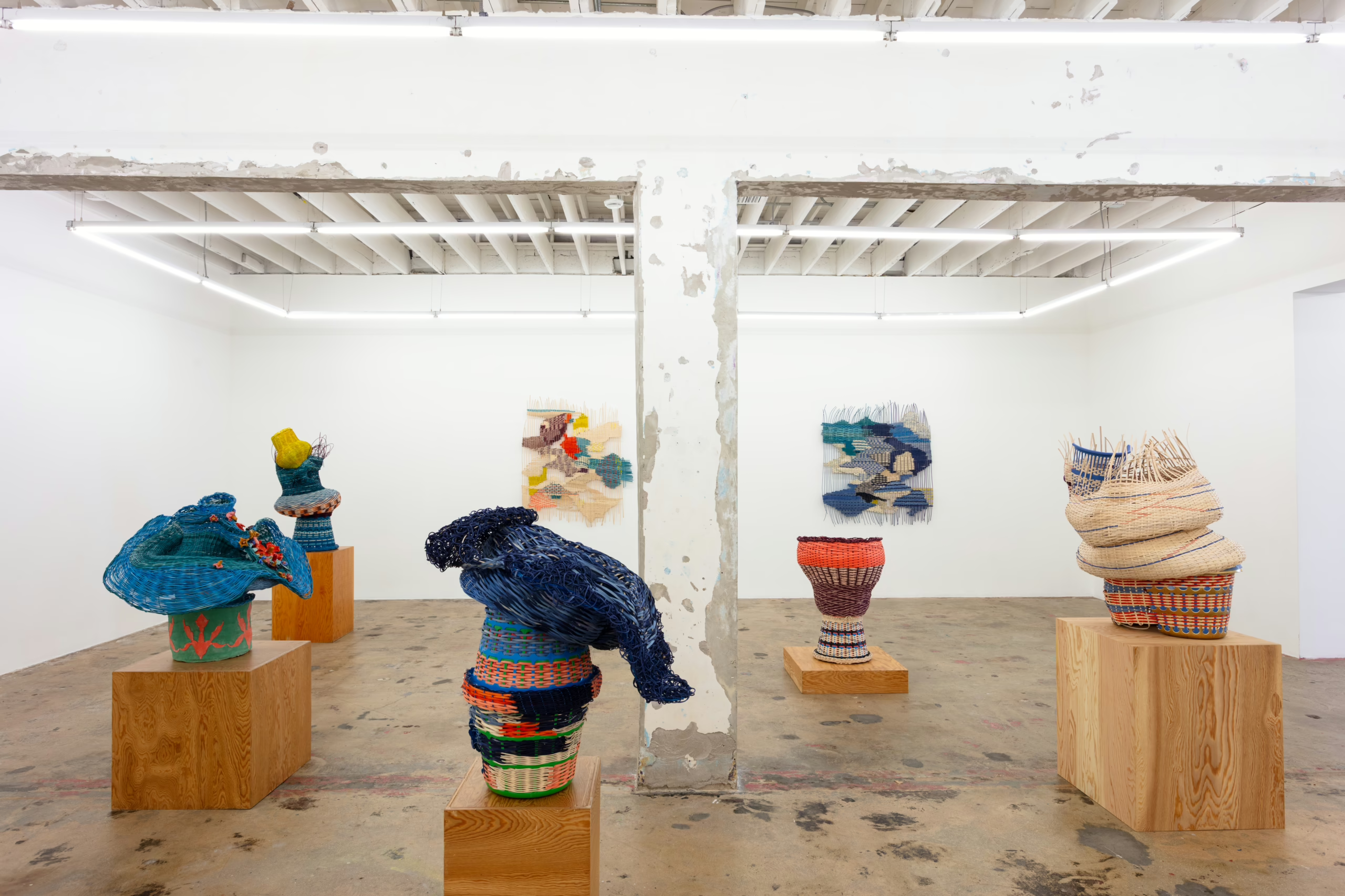
Dee Clements: Late Bloomer, Installation View.
Nina Johnson presents Late Bloomer, a solo exhibition of new works by Chicago-based artist Dee Clements. Through a vibrant collection of woven sculptural pieces, Late Bloomer centers on the entangled histories of domestic labor, emotional inheritance, and undervalued craft traditions.
-

Dee Clements, Excavating Domesticity, 2025, Woven reed, dye, gouache, cut up plastic laundry baskets, polyurethane, 36 x 27.5 x 27.5 in.
-
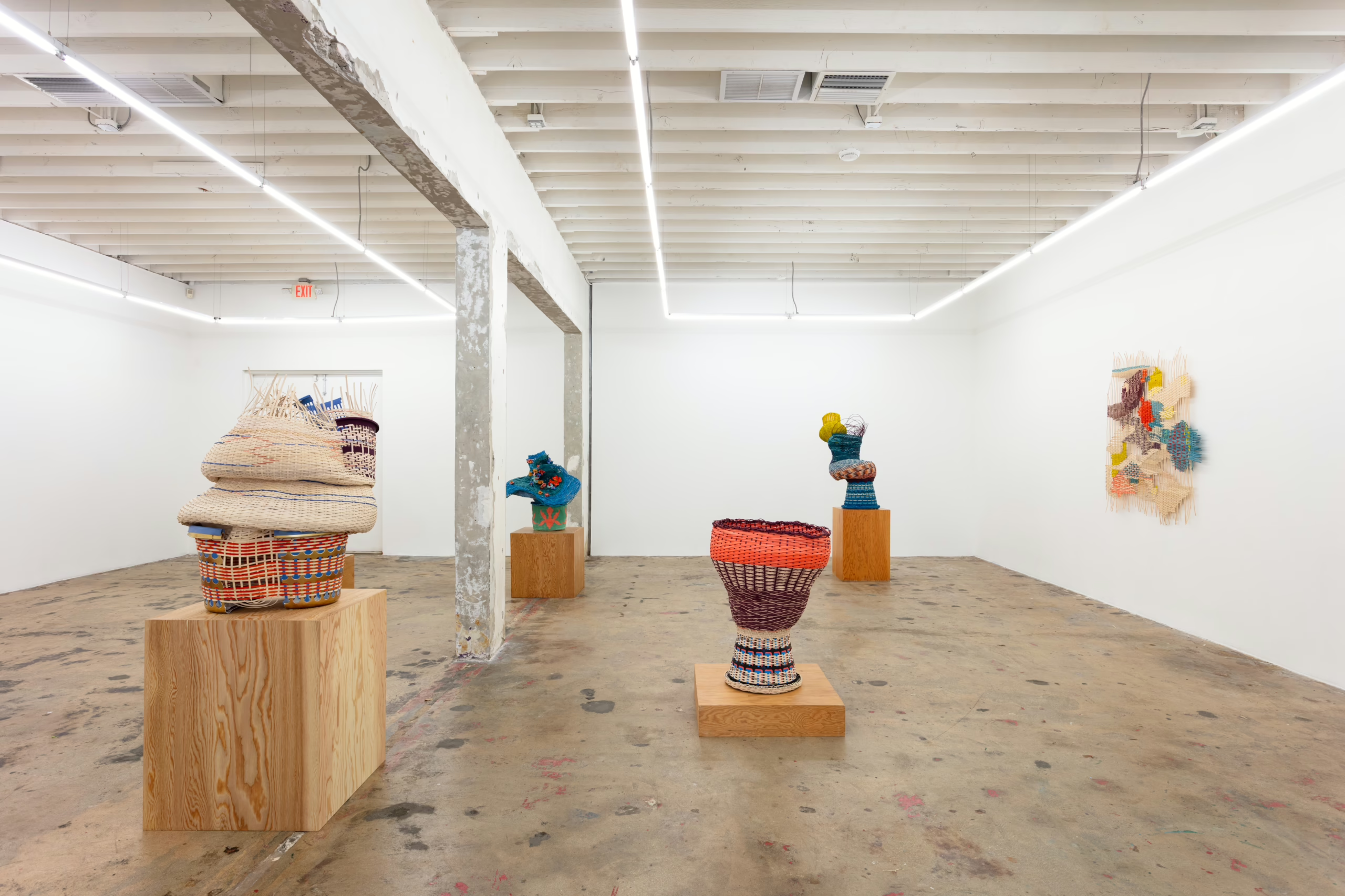
Dee Clements: Late Bloomer, Installation View.
Using found materials including deconstructed plastic laundry baskets—altered, embedded, and layered like archaeological relics—the exhibition invokes emotional and domestic labor that often goes overlooked or unnoticed, particularly the work historically assigned to women. Weaving together dyed reed, ceramics, and painted laundry baskets, Clements builds sculptural forms that are finely detailed and bold, asserting a powerful presence while exalting the ancient culture of craft (specifically weaving, basketry, and fiber work) that has been long marginalized within the art world.
-
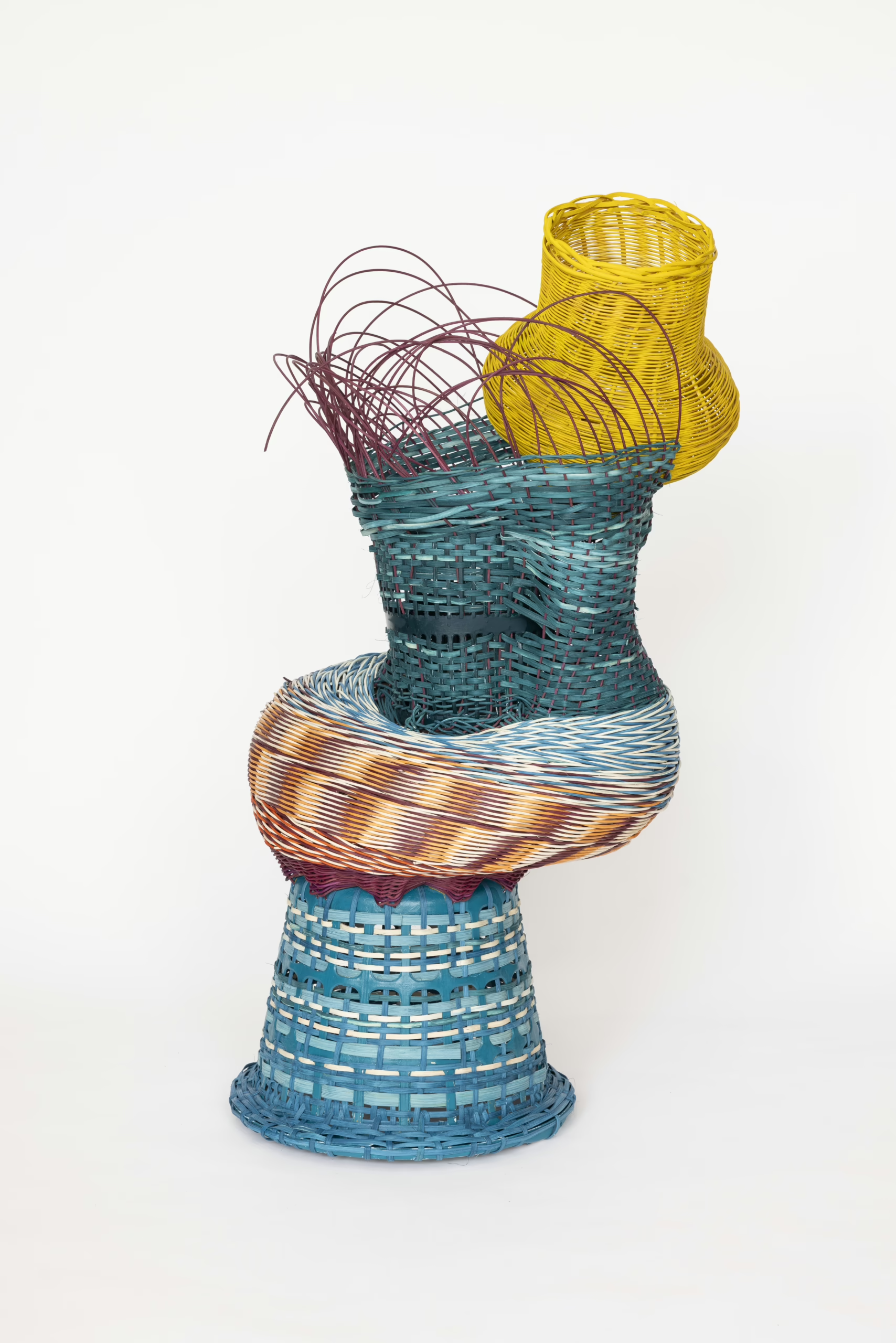
Dee Clements, The Body is a Piece of Land, 2025, Woven reed dye, gouache, plastic laundry basket, polyurethane, 43 x 22 x 22 in.
-
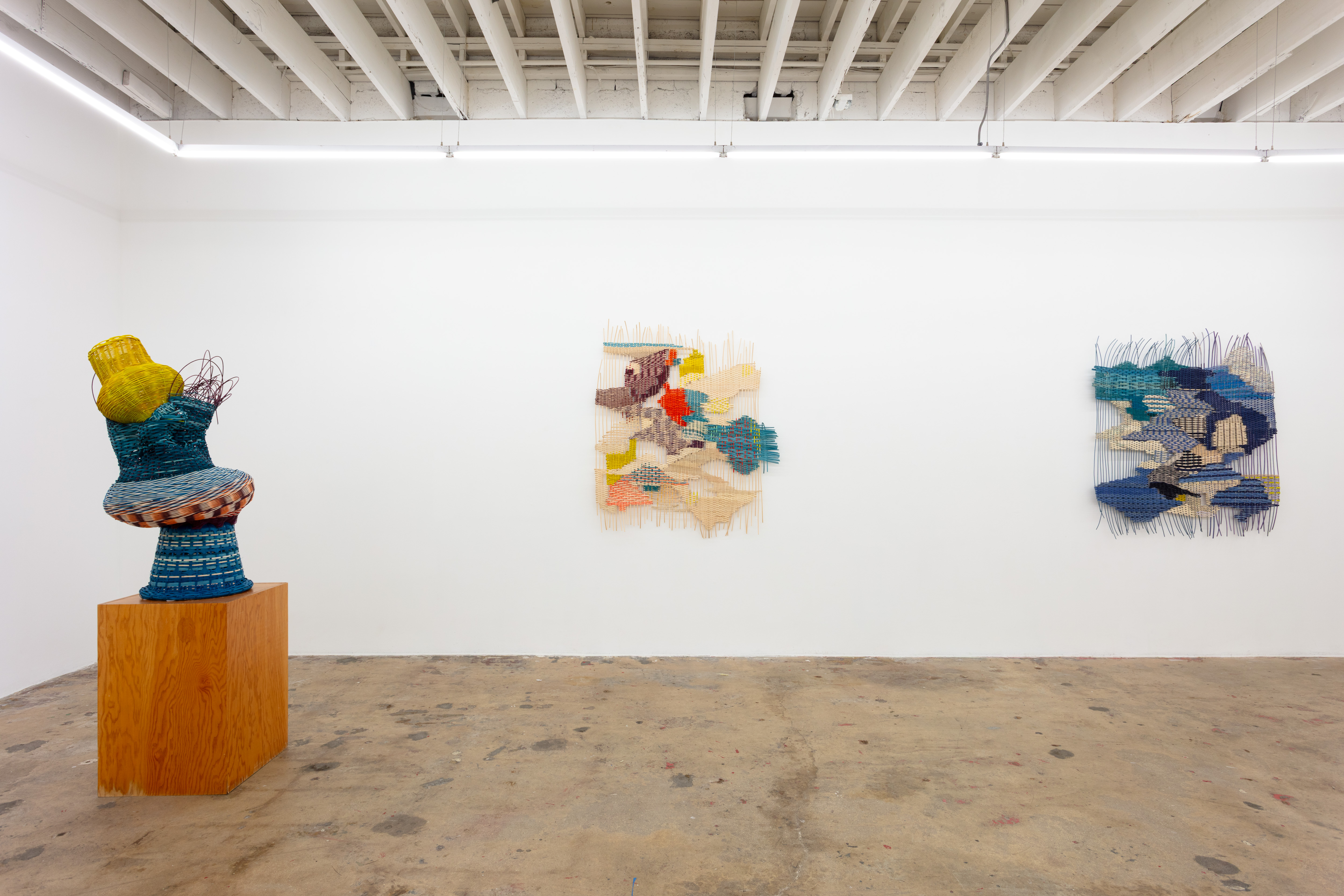
Dee Clements: Late Bloomer, Installation View.
The exhibition includes several standalone sculptures and four wall pieces; these forms refuse the tidy categories of traditional craft or fine art, echoing what the artist calls “the language of the basket as a container”—a structure for holding, but also a symbol of constraint, labor, and lineage. In Late Bloomer, the basket becomes a feminist cipher: a portal through time, a critique of patriarchy, and a space of transformation. Exploring themes of feminism, ethnography, patriarchy, weaving, craft hierarchies these works ask: What do we carry? And who is asked to carry the most?
-
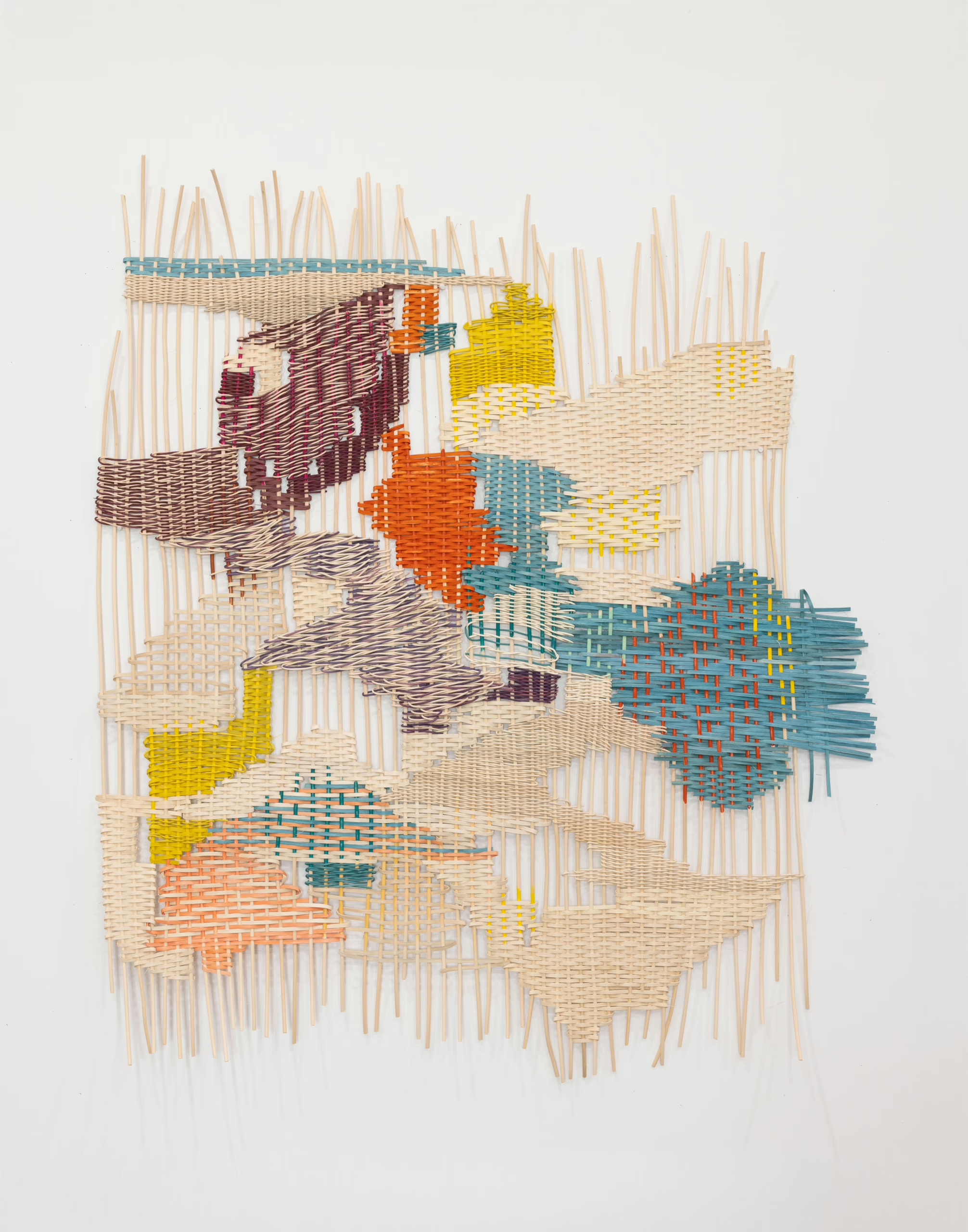
Dee Clements, Romana, 2025, Woven reed, dye, gouache, polyurethane, 56 x 49 in.
-
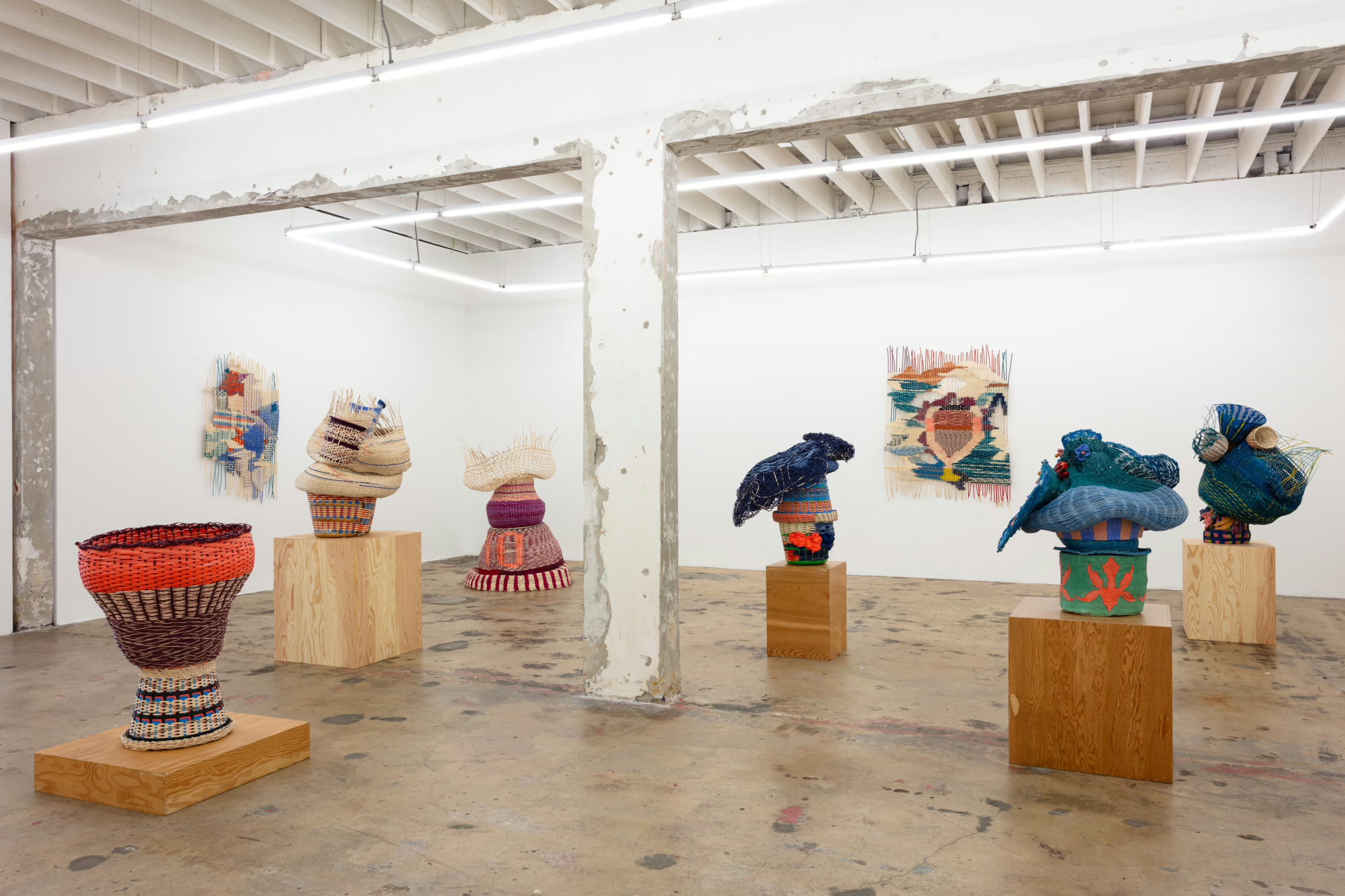
Dee Clements: Late Bloomer, Installation View.
The tactile quality of Late Bloomer is immediately striking. Reeds curl like handwriting across skeletal basket frames, which have been split open, stacked, embedded, and reshaped. The forms are bold yet tender, monumental yet intimate. In My body is a piece of land, a single laundry basket becomes a structure for reclaiming space— personal, emotional, historical. The exhibition speaks to the undervalued legacy of craft, particularly fiber work and basketry, and its quiet resilience in the face of patriarchal dismissal. Clements challenges this hierarchy through scale, repetition, and a sharp conceptual lens. Here, weaving becomes more than a technique—it becomes language, protest, and presence.
-
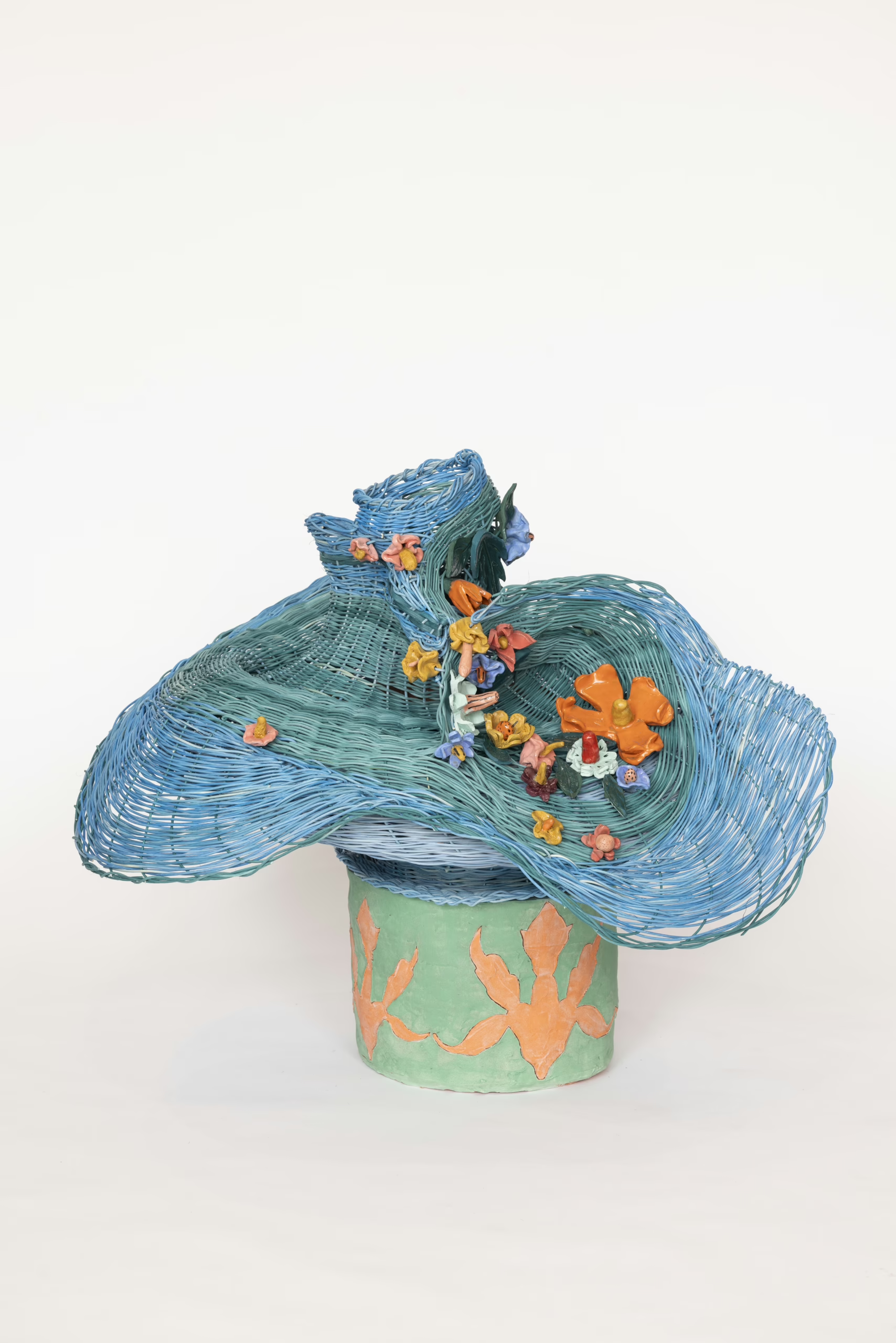
Dee Clements, Late Bloomer, 2025, Woven reed, dye, ceramic, polyurethane, 32 x 40 x 40 in.
-
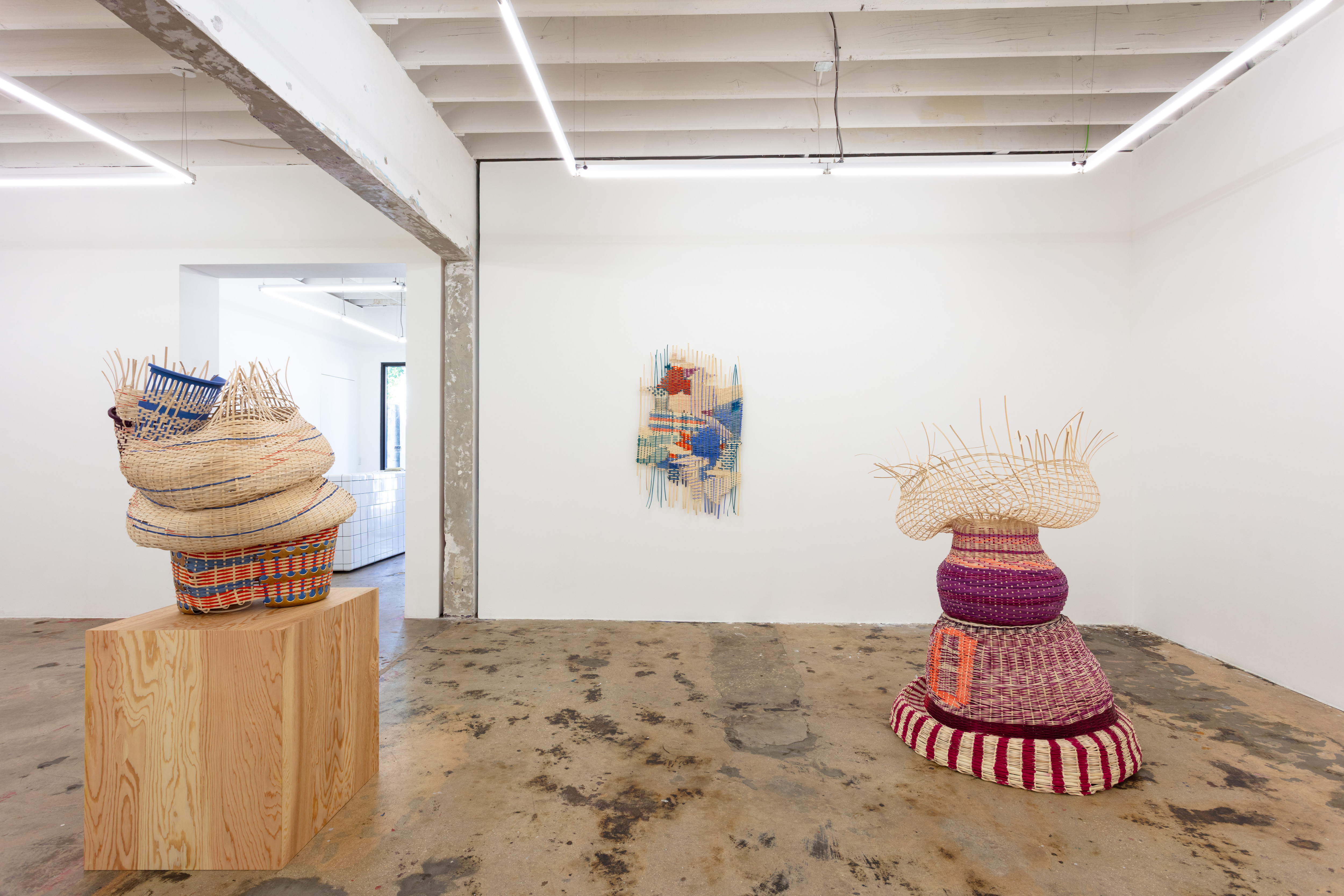
Dee Clements: Late Bloomer, Installation View.
Much of the exhibition stems from a place of personal reflection. Clements writes, “Because I am an artist and poor, I always feel about ten years behind where my peers are in life…The work is how I can make some sense of my femininity and how or where I belong.” This sentiment pervades through the intricate materiality of the works. Late Bloomer becomes a reclamation, a gentle rebellion— delicate and unyielding.
Nina Johnson presents Dee Clements: Late Bloomer from May 22nd through August 7th in the Front Gallery.
-
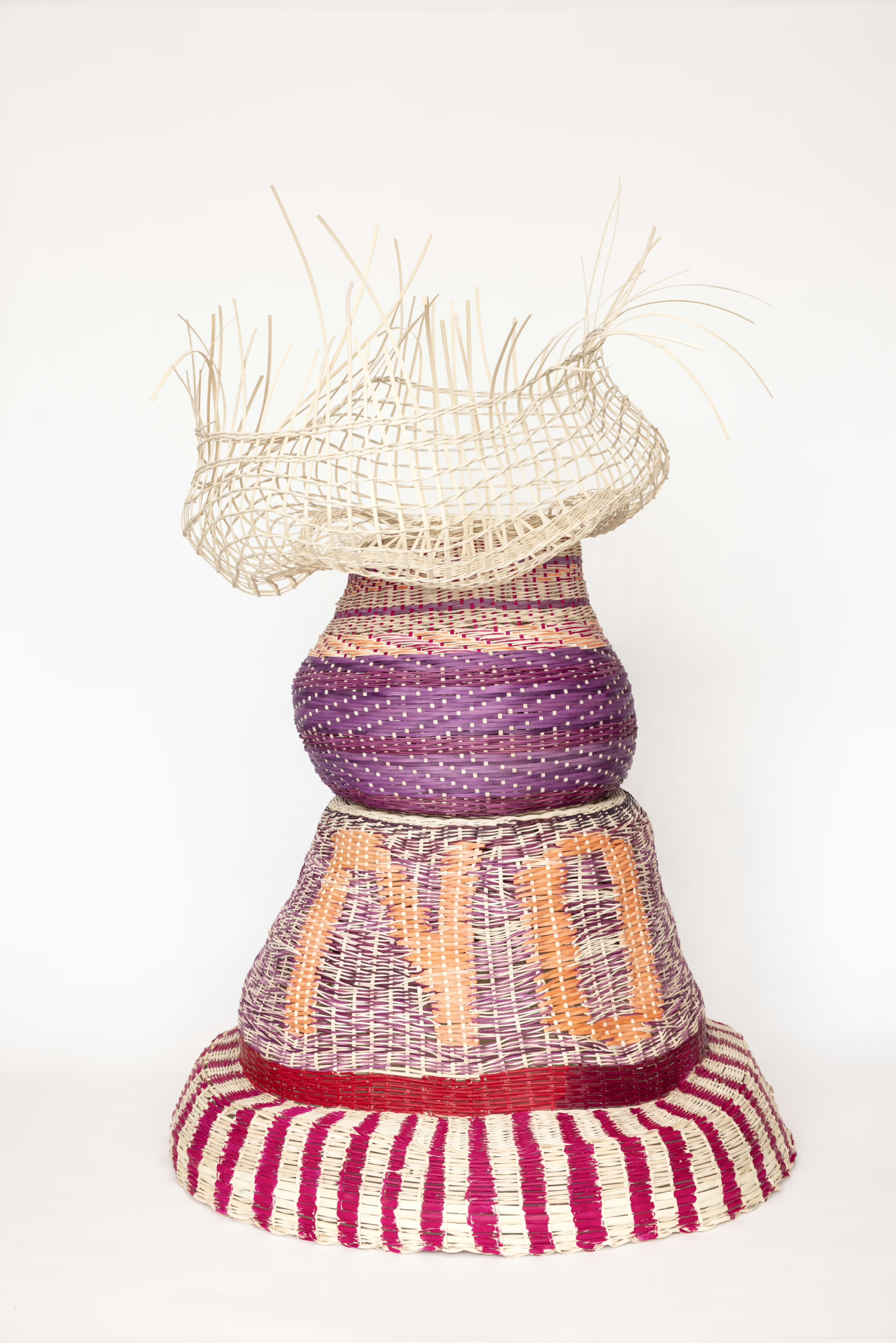
Dee Clements, No!, 2025, Woven reed, dye, gouache, wood, polyurethane, 64 x 41 x 41 in.
Dee Clements (b. 1980, Rochester, New York) is a Chicago-based artist working in sculpture, weaving, and object-based installation. She received her MFA in 3D Design from Cranbrook Academy of Art and a BFA from The School of the Art Institute of Chicago. She has exhibited work with Kasmin (New York), R and Company (New York), 65Grand (Chicago), The Pit (Los Angeles), Design Miami, Felix Art Fair (Los Angeles), and Salone del Mobile (Milan). For over a decade, Clements ran Studio Herron, a textile design company, and has been weaving and making art professionally for twenty-seven years. Her work investigates the intersections of feminism, ethnography, and the hierarchies of craft within contemporary art. This is her second solo exhibition with Nina Johnson.